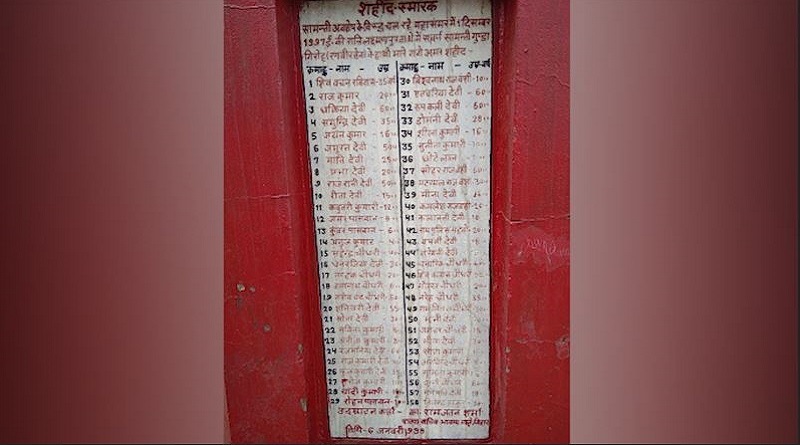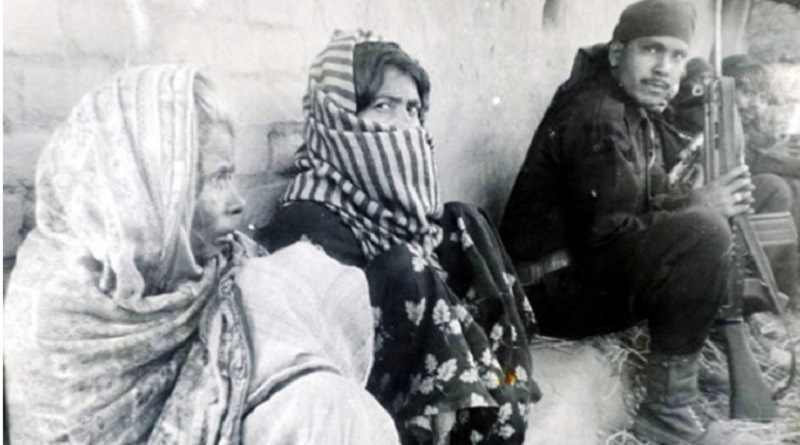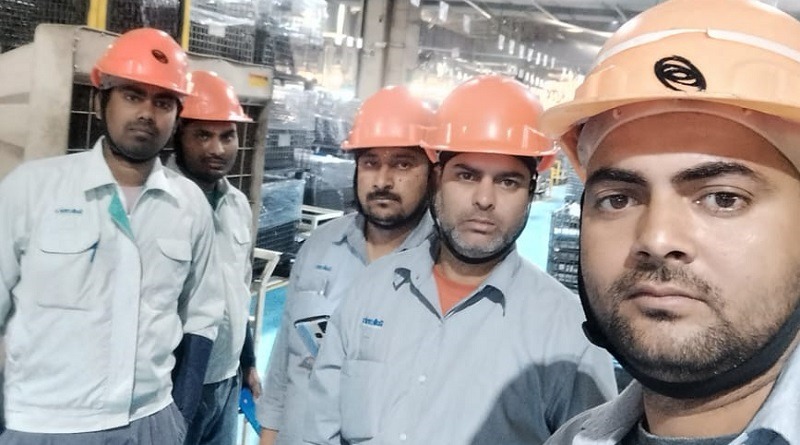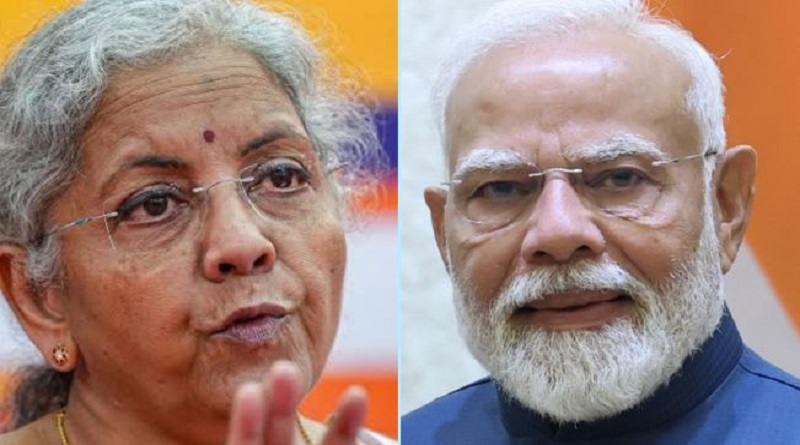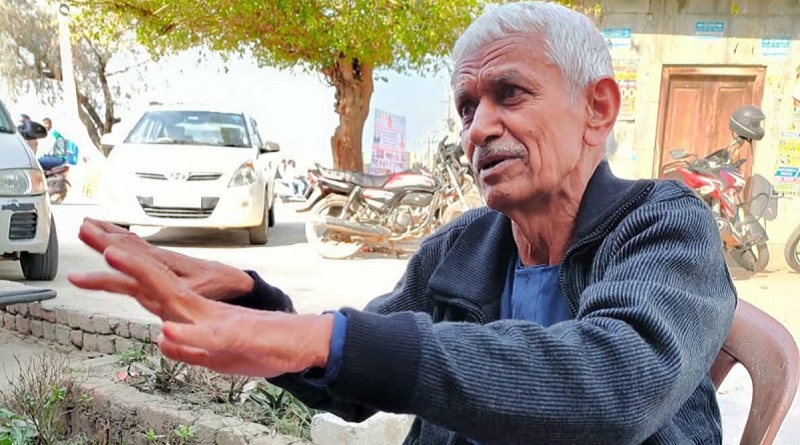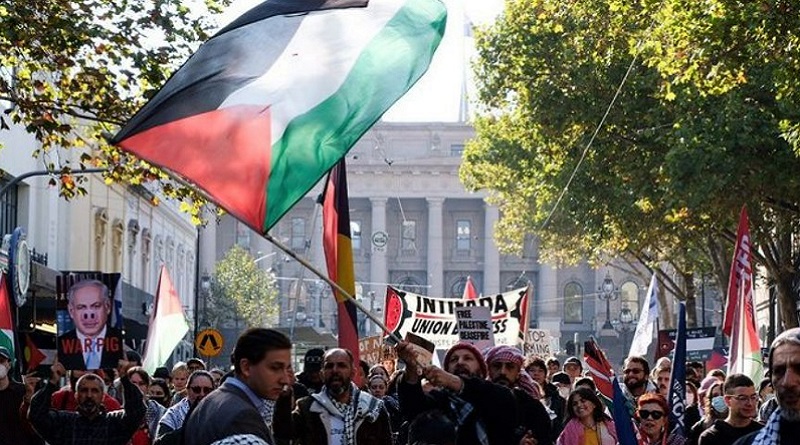In memory of Laxmanpur Bathe massacre on 25th anniversary
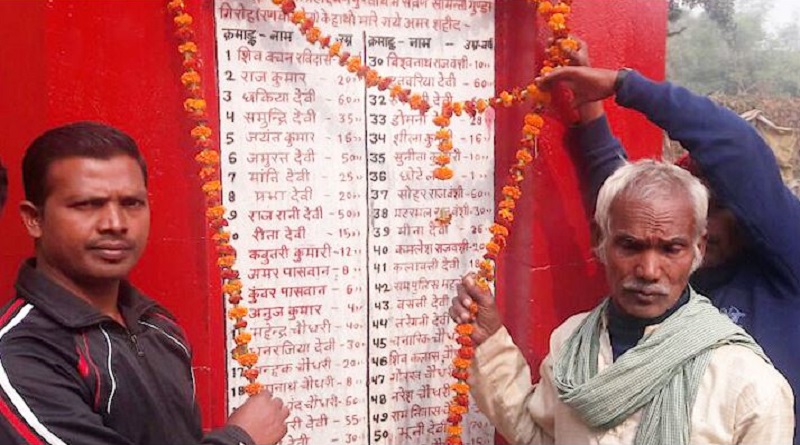
By Harsh Thakor
The massacre at Laxmanpur-Bathe of Jehanabad in Bihar on the night of 1 December in 1997 was a landmark event with distinguishing features .
The genocide rightly shook the conscience of the nation in the 50th year of Indian independence. The scale of the carnage was unparalleled in any caste massacre. It was a perfect manifestation of how in essence the so called neo-liberal state was in essence most autocratic.
No more ample illustration of how caste landlordism functioned as an agent of the state, which patronised rule or hegemony of higher castes.
On December 1st last year we commemorated the 25th anniversary of this gruesome incident. The Democratic movement dips it’s blood in memory of the martyrs of Laxmanpur Bathe.
Background
The scenario of Bihar featured the tussle for land between the upper castes and the dalits, and the police forces with the naxalite groups, with many areas turning into flaming fields.
Massacres of rural poor of dalit castes unleashed by various landlord armies, were a routine feature in Bihar in the 1980’s and 1990’s. In sheer desperation they resorted to merciless attacks on the intensifying rural poor uprising to enable it to preserve their caste-class privileges.
It carried on the legacy of several massacres in yesteryears, be it in Arwal, Shankarbigha ,Belchi , Aurangabad etc
The most important grassroots work in this region was sown by the erstwhile CPI (ML) Party Unity, who through the Mazdoor Kisan Sangrami Parishad, created a thorn in the flesh for upper caste senas which received patronage from ruling class parties.
It is worth reading reports in journal ‘Mukti Marg’ about the crystallisation of peasant and agricultural labour resistance, particularly in Jenahabad and Palamau. Whatever defective practices the Party Unity armed squads played a pivotal role in combating the reactionary attacks of the Upper caste Ranvir sena and enhancing the striking capacity of the dalit agricultural labourers.
Do watch : A video report from Shaheed Smarak, Laxmanpur Bathe
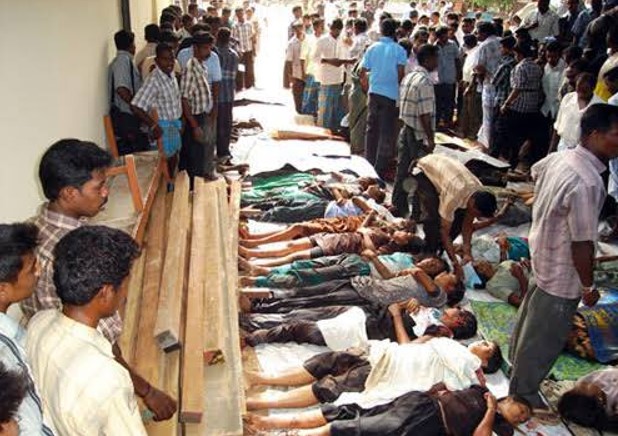
They gave a striking blow to the authority or hegemony of the landlord armies. Under the Mzdoor Kisan Sangrami Parishad leadership, agricultural labourers of Bathe were fighting for a decent minimum wage, a dignified life, and their right to Gairmazarua land.
Even Maoist Communist Centre led squads crushed the social base of landlord armies in Auranagabad and Gaya, forming revolutionary peasant committees.
In important respects CPI (ML) Liberation aroused democratic consciousness in Bhojpur. The work of the genuine communist revolutionary groups sharpened the cudgels or gave a cutting edge to the peasant struggles against landlordism and sharpened their striking power.
Even if securing mass base by penetrating amongst rural labourers, the CPI (ML) Liberation nullified the prospects of revolutionary democratic class struggle, by embarking on the parliamentary road and playing the electoral game. It forged electoral alliances with parties like CPI, CPM, Janata Dal etc.
Indirectly it even harboured attacks on the revolutionary democratic forces. It played almost passive role in the protests of the revolutionary democratic organisations.
Intellectuals still fail to gauge how in important ways it has embraced ruling class politics even f it has been semi-progressive in junctures. I do aknowledge that it undertook positive propaganda work in the lats decade in condemning upper caste partisanship of the ruling classes.
The phenomena of how the Ranvir Sema sprung up, marks a fascinating study. The Ranvir Sena was founded by upper-caste Bhumihars in Belaur village, Bhojpur district, in 1994.
It first made its presence spread in July 1996 with its attack on Bathani Tola in Bhojpur district, Bihar, which left nineteen Dalits and Muslims, mostly women and children, dead.
Bathani Tola in 1996
In Bathani Tola in 1996, it conducted major massacre of CPI (M-L) cadres in organizing in the village and to prevent a labour boycott on hundreds of acres of land. None of the Ranvir Sena leaders were ever brought to the book.
Since its inception, the Ranvir Sena has been mercilessly committed killings, rapes and lootings in the villages of Belaur, Ekwari, Chandi, Nanaur, Narhi, Sarathau, Haibaspur, Laxmanpur-Bathe, Shankarbigha, and Narayanpur. Quoting the Peoples Union or Democratic Rights of Delhi in October 1997 “The organized killing of poor peasants and landless labourers by middle and upper caste landed armies and [the ensuing] retaliation by Marxist-Leninist organizations [Naxalites] have been flashpoints in the agrarian scene in Bihar over the last fifteen years.
This is not a new phenomenon. What is relatively new however is the entry on the rural scene… of a new upper caste landed organization called the Ranbir Sena.
It has, over the last three years, been responsible for a series of massacres of the rural poor, such that the names of obscure villages have become known to a wider public through the national press.
In a region where tragic massacres repeat themselves with monotonous regularity, the state’s response is predictable and misdirected setting up more police camps and increasing the financial allocation for anti-Naxalite operations.
The issues remain the same; the landlord army is different each time. We are condemned to reiterate the same demands each time and like some ritual drama whose script is familiar to all, the same events are re-enacted each time, drawing the same reactions from the state… One has to remember that the dreadful reality of bloody massacres is the outcome of [the state’s] refusal to address basic questions of agrarian struggle.
I recommend readers to refer to old issues of ‘Peoples Resistance’ organ of All India Peoples Resistance forum, ‘Hindi journal ‘Mukti Marg.’ and reports of Peoples Union for Democratic Rights, Delhi. as well as Human Rights Watch report of 1999 to gain a lucid background of scenario in Bihar.
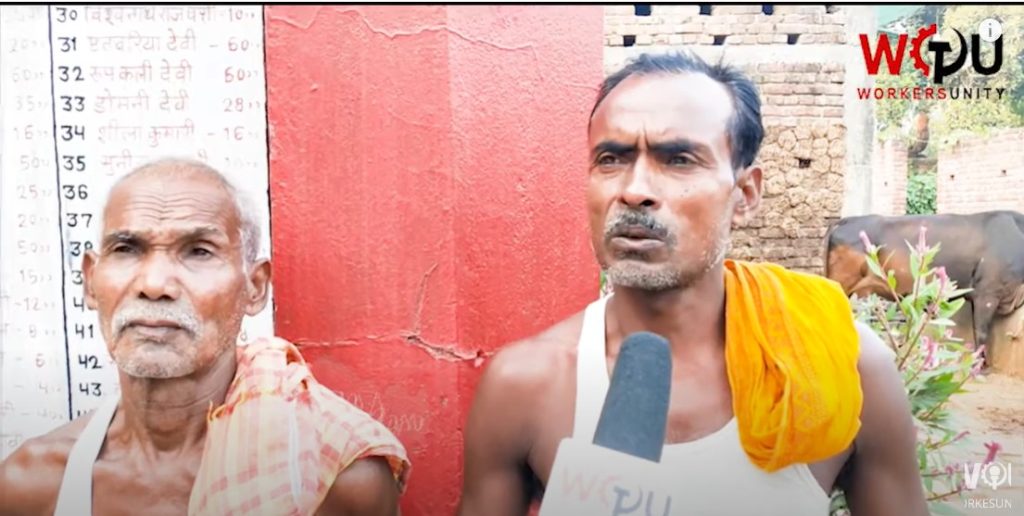
Report
On the evening of December 1st, 1997 armed Ranvir sena activists crossed the Sone River into the village of Laxmanpur Bathe where 180 families lived.
In all 61 persons two thirds of who were children, women and old persons perished in a gruesome operation at the dead of night They raided 14 Dalit homes and victims included sixteen children, twenty-seven women, and eighteen men.
In some families, three generations were killed. Twenty people were also seriously injured. All the victims belonged to the class of agrarian labourers and were dalits in the social hierarchy.
In their struggle for socio-economic emancipation they had thrown their lot with parties like CPI (ML) Liberation, Maoist Communist Centre and CPI (ML) Party Unity.
As most of the men fled the village when the attack began, women and children numbered high among the fatalities.
During the attack, at least five girls around fifteen years of age were raped and mutilated before being shot in the chest by members of the Ranvir Sena.
Most of the victims allegedly belonged to families of Party Unity supporters; the group had been demanding more equitable land distribution in the area.
The village of Laxmanpur-Bathe had no electricity and was virtually inaccessible by road. In crossing the Sone river to reach the village, sena members reportedly also executed five members of the Mallah (fisherman) community and murdered the three Mallah boatmen who had ferried them across the river on their way back.
Behind the Attack
According to newspaper reports, the main reason for the attack was that the Bhumihars wanted to seize fifty acres of land that had been allotted for distribution among the landless labourers of the village.
A group of peasants, reportedly linked with Naxalite activity, was ready to take up arms against them waged armed combat against them. Authorities apparently were aware of the tensions but “had not cared to intervene in the land dispute and prevent the disturbance from brewing and instead allowed turbulence to precipitate.
The killers were men of the Ranvir Sena an upper caste landlord army which enjoys the political backing of the BJP as well as support from a section of the RJD.
This time the target chosen was a village in Jehanabad that lies close to the districts of Bhojpur, Patna and Aurangabad.
The essential purpose was to send the message across the whole of central Bihar. The time chosen was significant as the political crisis at the centre had matured and a caretaker government was in office.
Thus, by effecting an upper caste mobilisation of both Bhumihars and Rajputs, it also symbolised the beginning of the political offensive by arch-reactionary forces. As reports suggest, this was first of the trilogy of massacres before the elections. The other two are planned in the districts of Rohtas and Buxar.
The whole operation was most structurally planned. Professional killers were assembled from all neighbouring districts apart from Jehanabad.
To create a record and grab the international news headlines, the number of persons to be killed was predetermined with the specific targeting of women and children. For a smooth operation, a soft target was selected where people were most oblivious and unprepared to defend themselves.
The record was indeed created not only numerically but also in the scale of brutality and cowardice. Quoting late CPI (ML) Liberation leader Vinod Mishra “Side by side, another record was created by the media, particularly in Bihar, which excelled in hypocrisy. Since day one, Sangh Parivar propaganda machinery swung into action and the media began playing to its tune.
A prominent journalist from Patna wrote in a national daily that it was the same old story of clash between Ranvir Sena and Naxalites, the only difference being that this time Naxalites were unarmed.
How cleverly the cold-blooded massacre of women and children was rationalised as a routine kind of confrontation! The same journalist in subsequent writeups tried to rationalise Ranvir Sena as an expression of peasants anguish against indiscriminate Naxalite violence.
This typical attitude was common to the entire upper caste journalist fraternity barring a few exceptions. The long list of upper caste villages supposedly under the threat of Naxalite revenge were boldly displayed in newspapers and cock-and-bull stories of PWG squads entering into Jehanabad were dished out.
The news analysis that began with Laxmanpur-Bathe invariably ended up with concern over general deterioration of law and order and demands for action against Naxalite extremists who dare to run parallel governments and even attack the police.
The news of protests were underplayed whereas the fast by BJP leaders and Vajpayees visit was overplayed. All this was a well-orchestrated move to divert public attention from Ranvir Sena, from its organic links with the BJP and pressurise the state administration to divert its operations against the victims themselves.”
Most accurate or informative report by Human Rights Watch,in 1999, which I suggest everyone to read.
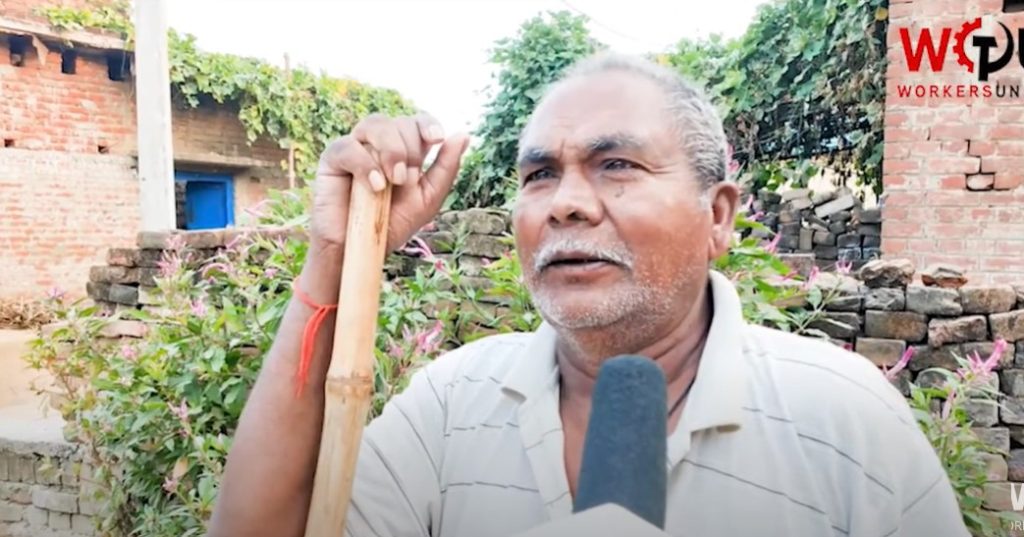
Spark of protests
The dictates of the whole range of mercenaries is did not prevent the protest from crystallising into larger dimensions. The massacre was tooth and nail condemned by progressive public opinion all across the country and even abroad the aftermath witnessed some of the most sporadic protests since Independence, with spark of protest engulfing a wide range of areas. They shook the rulers in their very belly.
I have vivid memories of the Meetings conducted in various parts of India like the All-India Peoples Resistance forum, particularly in Mumbai, Kolkata and Delhi, as well as the protests staged by democratic organisations from diverse trends.
Memorable joint protests were staged by organisations like Democratic Students Union, Bharat Naujawan Sabha,All India Students Association, Delhi Radical Students Organisation ,Chatra Yuva Sangharsh Vahini, All India Federation of Trade Unions etc in Patna and Delhi.
In Delhi, the Peoples Union for Democratic Rights, made a significant impact, in giving the event its true colours The All-India Peoples Resistance Forum published a most illustrative report illustrating the partisan nature of the state with the bloody landlord senas, the role of the Communist Revolutionary Movement and the treachery of revisionist parties like CPI(ML)Liberation.
In districts of Bihar torchlight protests were jointly staged by Democratic Students Union , Mazdoor Kisan Sangrami Parishad and Bharat Naujawan Sabha in Patna, Begusurai, Khagaria and Aurangabad.
Lok Morcha Punjab in January 1998 staged memorable protests with organisations like Punjab Khet Mazdoor Union,and Tarksheel Society in Ludhiana, Bhatinda and Faridkot. It reached the message amongst the basic masses, giving revolutionary democratic thrust.
In Mumbai although small, qualitative meetings were conducted by the Jagrut Kamgar Manch in Ambedkar nagar basti area, besides the airport, in a predominantly dalit area.
In Bihar a front or ‘Jan Abhiyan was formed by an umbrella of 13 democratic organisatiions. including a lawyers front. Most intense protests outside Bihar Bhavan in Delhi and in Patna. Unfortunately the front could not crystallise into a cohesive unit or striking force.
On 5 December, the left and democratic alliance of 17 parties called for a Bihar Bandh The bandh was supported by a host of other democratic forces, but was superficial failing to distinguish from ruling class, politics and had overtones of the parliamentary path.
The massacre was tooth and nail condemned by progressive public opinion all across the country and even abroad
Most accurate informative report by Human Rights Watch in 1999.
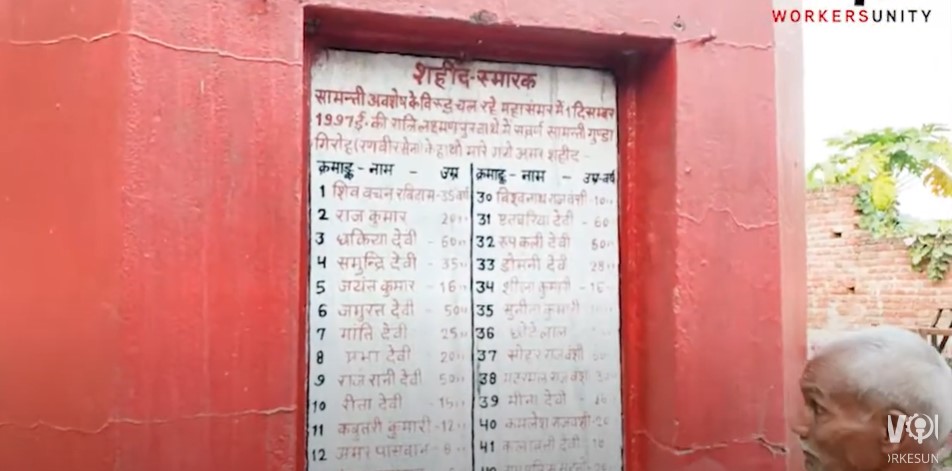
Aftermath
In December 2008, charges were made against 46 Ranvir Sena men. Sessions Judge Mishra, on conclusion of trial in the case on 1 April, fixed 7 April 2010 as the date for announcing the verdict.
Earlier, the case was transferred to Patna from Jehanabad following a Patna High Court order in October 1999.
13 years after the brutal massacre of landless poor by the Ranveer Sena at Laxmanpur Bathe in Jehanabad, Bihar, the Additional District and Sessions Court of Patna sentenced 16 Ranveer Sena men to death and 10 to life imprisonment.
The verdict, though belated, is welcome – but those who bear greatest guilt for that massacre – Ranveer Sena Brahmeshwar Singh and the political patrons of the Ranveer Sena escaped punishment entirely.
On 7 April 2010, the Additional District and Sessions Judge Vijai Prakash Mishra of the Patna Civil Court sentenced 16 men to death and 10 to life imprisonment for the massacre.
While pronouncing the verdict, sessions judge Mishra described the killings as a “stigma on civil society and rarest of rare cases of brutality.
On 9 October 2013, the Patna High court acquitted all 26 accused persons, due to “lack of evidence”. The CPI (ML) Liberation staged a Bandh throughout central Bihar. Maoists called for a 24-hour strike against the court’s decision in Bihar’s Muzzafarpur distruct and the police advised that the banks and shops remain close.
The judgement was perfect illustration of the proto-fascist social order, which patronises the tyranny of upper castes or the Brahmanical social order.
It repeats history of the judgement giving reprieve to 23 killers in Bathani Tola and later also in cases of Naryanpur and Sendani.
Democratic forces must unanimously condemn the acquittal of the culprits, which manifests how are judicial system is being stripped of it’s sanctity, partisan to the powerful or mighty. and vitiated by
Ironical that Nitish Kumar was part and parcel of the crimes that the Ranveer Sena perpetrated. Using such elements to defeat the RJD and wrest political power in Bihar It is noteworthy that the first decision the Nitish Kumar government took after coming to power in 2005 was to scrap the Amir Das Commission that had been constituted to investigate the massacres perpetrated by the Ranveer Sena and inquire into its political linkages.
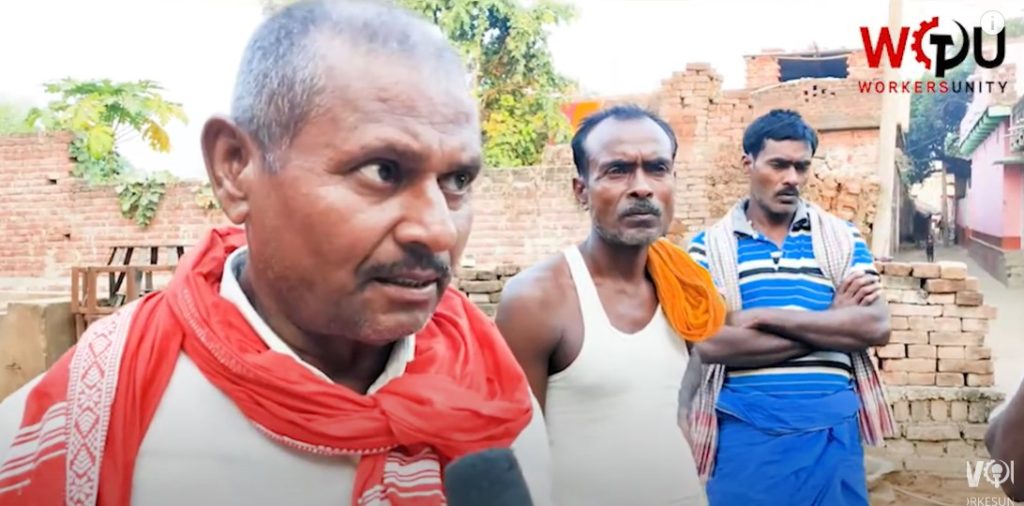
Analysis
The massacre sparkled class hatred among rural poor, strengthened their determination to close their ranks, and led to the growing realisation of going over to revolutionary armed resistance, as the best way of defence, With the advent of Ranvir Sena, the class war no longer confined to this or that region of Central Bihar any more. It began to encompass central Bihar It precipitated conditions for forging a broader class unity.
It was Laloo Yadav, sowed the breeding ground for the growth of Ranvir Sena as a weapon to wipe out the Communist evolutionary led movements.
Illustrative how so called bourgeois democracy paved the path for a force like Ranvir Sena to sprout.-,which got sponsorship of ruling class parties. It manifested how the state used such massacres as a weapon to crush the communist revolutionary led democratic movement. and the nexus of the state machinery with the landlord militias.
A predominant sectarian weakness characterised the democratic movement, lacking genuinely democratically operating mass organisations and no coherent agrarian revolutionary movement. A marked feature of that time was the inter -group clashes or armed squads of Revolutionary groups. which created embitterment within the revolutionary camp. The very weakness in fortifying a powerful agrarian revolutionary resistance invited such a reaction at Laxmanpur Bathe.To an extent armed squad actions of Party Unity and MCC groups, invited such reprisals.
On 25th anniversary of the Laxmanpur Bathe massacre, the rural proletariat continues shedding blood for its socio-economic and political liberation and it is regretful that people could not be organised to avenge the death of their class brethren or to eradicate all sectarian attitudes and unite all positive social sections and political to a higher level to strike a crushing blow to the hegemony of Upper caste landlordism.
Positive that Communist Revolutionary forces, Marxists and democrats have strived to link the class with the caste question and make caste an integral part of evolutionary movement.
Intellectuals or activists like Bela Bhatia enriched us on Bihar and on an All India level, Anand Teltumbde.Bela Bhatia’s writings in journals like EPW most lucidly project the link of caste conflict .Most illustratively she narrates the caste polarisation and gives high credence to work of CPI (ML) Party Unity.
Regrettable that wave of Hindutva neo-fascism subdued mass democratic movement with ban on democratic fronts like Revolutionary Democratic Front or Jan Prathirod Manch, when main culprits of massacre got a reprieve.
Bihar traditionally had a “bataidari” system under which landless tenants cultivated the lands of upper-caste households for a fixed share of the crop.
A similar system prevails at present, but the poor tenants are gradually being replaced by contractors. The erstwhile upper-caste landlords are slowly moving into other businesses owing to a deepening agrarian crisis. Their political links and wealth enable them to secure big government contracts.
Many of them also manipulate political links to get into the construction business. In some regions, agricultural workers do not deal with the landlords directly. An arte hired by contractors in the same fields where they worked in the past.
The contractors earn a commission from the landlords. , obtaining land on lease and employing these workers.
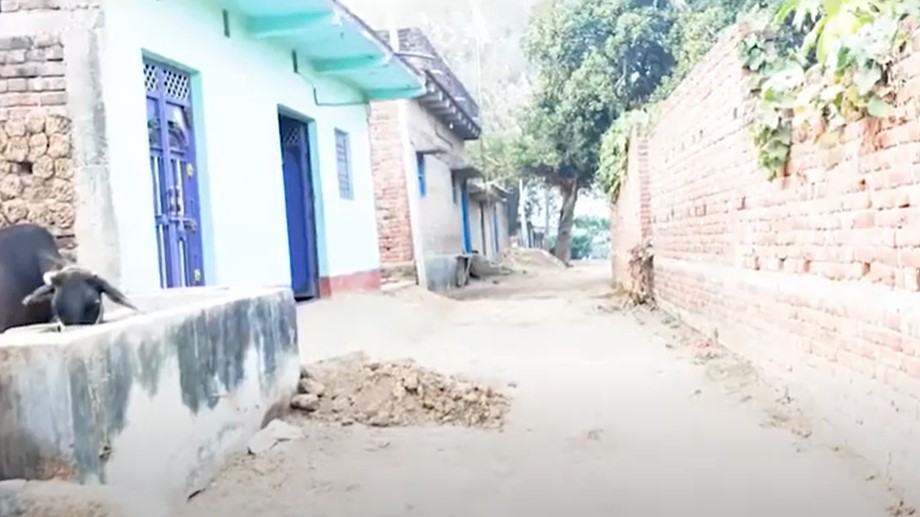
The feudal structure in Bihar is in a state of metamorphosis. However even in the new system, the poor occupy the lowest position in the hierarchy. They live in perpetual fear, knowing fully well that the government agencies never back them.
Therefore, the Bathe verdict and other such verdicts are not merely legal issues. They are a manifestation of an exploitative economy where inequality is harboured.. The massacres in central Bihar have their genesis in the feudal structure of the region.
Massacres are not just political rivalry between private militias and naxalites, as the Bihar government has been projecting but more about denying the poor the basic right of existence.
Even if massacres have ceased now, feudal tyranny continues to engulf many areas, crystallising in a new form. The Ranvir Sena was self-destructed because of internal divisions but the upper castes continue wave their banner with the same authority today.
Dalit tolas are still not electrified and have no pucca streets due to landlord pressure. The schools and anganwadi centres are in the upper-caste colonies, making them inaccessible for Dalits.
The lack of employment opportunities and the poor implementation of government schemes and the public distribution system make it imperative for the poor in the villages of central Bihar to work in the agricultural fields of upper-caste families.
Today to confront Hindutva communal fascism, contradictions may have to be utilised in Bihar or Jharkhand with sections like Janata Dal, who decades ago under Lalloo Yadav sponsored caste hegemony and endorsed caste massacres. Nevertheless, we must beware of trailing opposition ruling class politics who in essence represent interest of Upper castes or landlords.
Today the emphasis of the revolutionary democratic movement is placed more on Hindutva communal fascism over caste hegemony. Nevertheless, both menaces are intertwined.
We must guard in falling victim of caste identity politics .The fragmented Communist revolutionary movement is hardly able to give a viable alternative.
Harsh Thakor is a freelance journalist who has covered mass movements around India and done extensive research on revolutionary movement in Bihar,visiting Patna in 2001. Thanking reference from Human Rights Watch reports and writings of Vinod Mishra.
Also read
- Indian migrant workers in Gulf countries: Vital Yet Vulnerable
- Commemorating 40th anniversary of Mumbai Textile Workers Strike
- Demanding Repeal of 4 labour codes and monthly minimum wage Rs 27,000, TUCI protested 2nd day at Jantar Mantar
Subscribe to support Workers Unity – Click Here
(Workers can follow Unity’s Facebook, Twitter and YouTube. Click here to subscribe to the Telegram channel. Download the app for easy and direct reading on mobile.)
